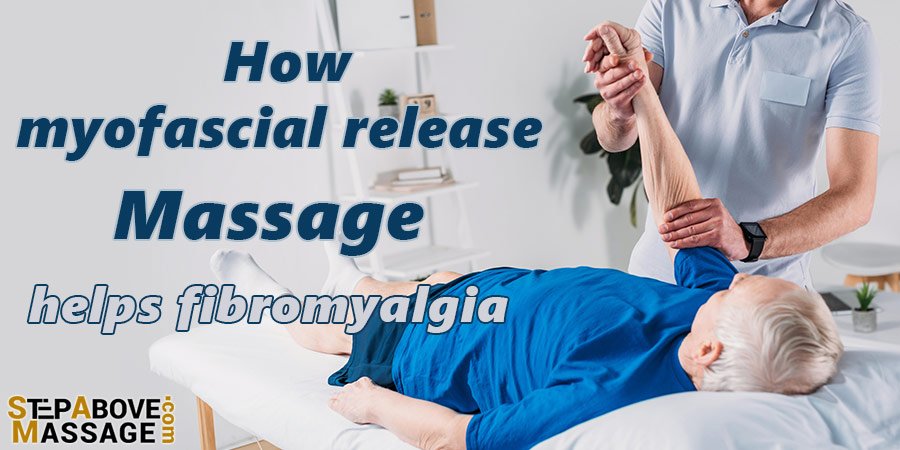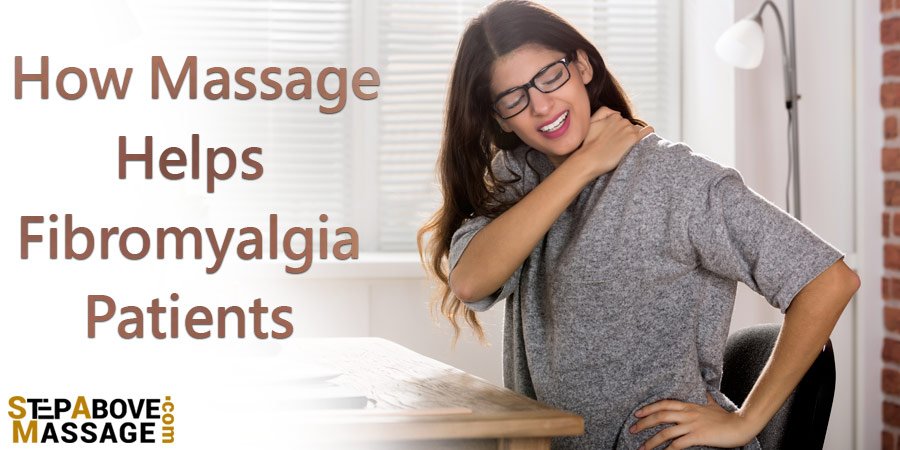You may be a Fibromyalgia sufferer or one of your relatives is involved in this painful disease. How much do you know about it? How do you or your relatives cope with the side effects of Fibromyalgia? Have you ever tried complementary therapies for relief like Fibromyalgia massage or other actions? Do you know the benefits of Fibromyalgia massage?
This is a useful guide for patients and their relatives to get rid of the side effects of Fibromyalgia. Even if you‘re a massage therapist or a massage student, you can get essential information about your clients here.
What is Fibromyalgia
Fibromyalgia is a syndrome with different symptoms including:
- Depression
- widespread pain
- difficulty sleeping
- anxiety
- mental problems
Its symptoms are severe and continuous. This is what happens when you have affected Fibromyalgia: this trouble reduces the elasticity of the body and the arterial blood supply will get disturbed. This process causes tension and the patient will feel chronic pain in the connective and skeletal muscles. Then an endless cycle will start; serotonin will be released and mood swings and depression appear. Sleep disorder, also makes the body restless and not refreshed; so the patient feels more depressed and fatigued physically and mentally.
There is no chemical cure for Fibromyalgia, but this cycle and the pain can be managed. Fibromyalgia affects women more than men and its cause is unknown yet. The best way to treat Fibromyalgia is to let the body repair itself. Some actions like a related massage like deep tissue massage can help this repairing process.
90% of the people who suffer from Fibromyalgia often turn to complementary therapies for relief. Massage therapy is one of the complementary therapies which is mostly used by these sick people. It is called Fibromyalgia massage.
What is Fibromyalgia massage
Fibromyalgia massage is a special massage method to relieve the tension and pain affected by Fibromyalgia. In order to reduce the pain, in a Fibromyalgia massage session, the therapist rubs the muscles, joints, ligaments, and tendons. The Fibromyalgia sufferers receive variable pressure; it may be light or deep pressure which depends on what the sufferers need.
Research on 404 patients with FM (Fibromyalgia) shows that 5 weeks of massage therapy had positive effects on relieving the symptoms of Fibromyalgia. the pain, anxiety, and depression have been improved, and also Sleep troubles caused by Fibromyalgia treat by a complex of both physical and mental actions.
Different forms of Fibromyalgia massage
Fibromyalgia massage has different forms which are used to relieve the symptoms. Recent research shows that these forms may be useful in relieving the symptoms.
- Myofascial release is in two types, passive (with resistance) and active (relaxing). It’s useful for muscle pain and stiffness. It relaxes the muscle and improves the blood flow.
- Connective tissue massage: this is accompanied by pressure to work on the deeper layers of muscle (connective tissue).
- Shiatsu: aiming to relieve the tension, the pressure in this type of Fibromyalgia massage works on special points.
- Manual lymphatic drainage: it’s a gentle massage that helps the body to drain the lymphatic fluid naturally. It gets the lymph fluid moving by rhythmic motions
- Swedish massage: a relaxing massage to the whole body
- Passive stretching: it focuses on specific muscles to relax the muscles, improve circulation and increase blood flow.
- Sports massage: it helps to treat or prevent the injuries of muscles.
- Massage chairs: it’s a cost-effective massage that needs regular long-term massage therapy. Having a massage chair, professional massage therapy will be available at any time of the day without leaving your home. The chairs that fit a Fibromyalgia patient are the Ijoy 2580 massage chair, Zerog 5.0 massage chair, Novo massage chair, HT-7120 massage chair, and Acutouch 9500x massage chair.
In comparison between these forms of Fibromyalgia massage, myofascial release has the best effects to treat Fibromyalgia. It releases stiffness, depression, anxiety, and fatigue and improves the quality of life. Connective tissue massage is either useful for relieving depression and improving life quality. Manual lymphatic drainage is more successful than connective tissue massage in healing the stiffness and depression plus quality of life.
Some massage professional does not recommend tissue massage because the pressure may suffer the patient. You can consult with a physician or your massage therapist to choose the type of massage.
The benefits of Fibromyalgia massage

Fibromyalgia massage sessions can help you in different ways:
- Being relaxed and having a better sleep. If the original trouble that Fibromyalgia caused is sleep troubles, it’s better to get massage in the evening to have a good sleep at night. So book the massage sessions for the hours near to night. Sleeping well at night helps your body to repair itself more efficaciously.
- Improving and refreshing the muscle: Fibromyalgia massage works on lethargic muscles. It increases circulation and the toxins within the muscles will be cleared out more easily. This action strengthens the patient and gives her vitality.
- Losing up the tight parts: massage loosens up the muscles and the mobility for physical actions will be increased.
- Relieving mental problems: massage relaxes both the body and mind. It improves the stress caused by
- Relieving headache: massages increase the blood circulation in the brain and as a result, the physical cause of headache will be disappeared.
- Treating depression and anxiety: Fibromyalgia brings hormonal and appetite fluctuations. Massage restores the hormonal system and so the effects will disappear. Actually, a massage decreases stress hormone and helps to increase the serotonin level.
- Feeling supported with a favorable treatment: most of the people around a Fibromyalgia patient do not take her or his condition seriously. The patient is accustomed to this unpleasant reaction. A good massage therapist respects the patient, treats her with empathy, regards her feelings, and would not judge the patient.
At the end of Fibromyalgia massage sessions, the patient feels well- being, relaxed body with better sleep quality and enough mental and physical energy to encounter the challenges throughout the day.
What a Fibromyalgia sufferer should know before a Fibromyalgia massage session
In the end, we recommend you to try Fibromyalgia massage, but before booking a massage session pay attention to these advises:
- It’s better to consult your physician before taking massage therapy.
- Make sure the massage therapist has a license and certifications
- Explain to the massage therapist your condition and the symptoms.
- Only you feel the pain and you know its level, so tell the massage therapist to use more or less pressure.
- Tell your massage therapist any sensitivity or allergy to the oils and lotions.
- Be patient! It may take some trial and error to find the appropriate technique for you to relieve the symptoms

If you have fibrositis, then you know how exhausting it can be. The painfulness, stiffness, and inflammation in your muscles could overpower day-to-day living. Over the years, I have learned that natural remedies, essential oils in particular, might just be one of these game-changing discoveries. But where exactly does a person start with the appropriate use of these for fibrositis?
In this blog, I’m going to walk you through a simple yet effective way of using essential oils for fibrositis. I want this to be as clear and as helpful as possible, so I’ll also be sharing personal tips and insights that I’ve gathered along the way to empower you as you try these oils yourself.
What is Fibrositis?
Why Use Essential Oils for Fibrositis?
Best Essential Oils for Fibrositis
- Lavender Oil
Lavender oil may perhaps hold the direction of one of the most important essential oils to be on hand. This is one of the most versatile oils, really shining when working with pain issues. Lavender oil has various antiphlogistic and antiphlogistic properties that can reduce muscle stiffness. I found applications directly onto aching muscles to work wonderfully.
How to use: Mix a few drops of lavender with a carrier oil, such as coconut oil, and massage it onto the area in need of flavor. Or add to a warm bath to soak up the full body.
- Peppermint Oil
Another favorite of mine for fibrositis has got to be peppermint oil. This helps cool down the pain quickly and is known for improving circulation, hence reducing muscular tension. Peppermint contains menthol, which gives that cooling sensation that feels refreshing on aching muscles.
How to use it: Like lavender oil, peppermint oil should be diluted in some carrier oil before application over the skin. Gently massaging it into the stiff muscles works wonders. I also love adding a few drops to a hot compress and applying it directly to the painful areas.
- Eucalyptus Oil
Eucalyptus oil will possess strong anti-inflammatory action, virtually against swellings and inflammation usually experienced with fibrositis by opening up the blood vessels, thus increasing blood flow to your muscles, very helpful in further courses of healing.
Usage: Diffuse eucalyptus oil in your room, especially during the night. It relieves body tension by inhaling vapors to relax the muscles. To achieve this better, you may mix it with a carrier oil and rub it on the muscles.
- Rosemary Oil
Rosemary oil is attributed to pain-relieving and anti-inflammatory effects. It helps diminish muscle pains, and the warmth it produces is great for promoting better circulation. I find rosemary oil comforting during a massage.
Usage: Rosemary oil can be added to warm water for a bath or the oil can be diluted with a basic one and used to perform a soothing massage. The heat of the oil relieves the soreness of muscles and their stiffness with gentle manipulations.
- Chamomile oil
Chamomile oil is calming and would be ideal for preventing the stress and tension that tends to worsen symptoms of fibrositis. Its anti-inflammatory action is soft and yet very effective. What I have found uniformly useful with chamomile oil is in soothing the mind while relieving muscle pain.
How to use it: Diffuse the chamomile oil into your living space or apply topically with carrier oil directly onto the affected muscles. You can even add it to your night’s sleep by using a few drops on your pillow for rest and relaxation.
How to Use Essential Oils for Fibrositis: Step-by-Step Guide
- Choosing the right carrier oil
You need to dilute essential oils first with a carrier oil before applying them onto the skin, as they are highly concentrated and, when applied directly to the skin, may be irritating. Some of my favorite carrier oils include coconut oil, almond oil, and jojoba oil. The three of them are gentle and mix well with essential oils.
- Mix the Oils
Now take your carrier oil, and add to it your choice of essential oil. A good rule of thumb is about 2-3 drops of essential oil per teaspoon of carrier oil. You can always add more if you find the amount isn’t strong enough to suit your taste, but it’s always better to start off with a little and work your way up.
- Apply in the Affected Areas
Massage into the body the oil mixture where pain or stiffness is most being had. Use your fingers to gently work the oil as best into the skin with small, circular motions. I always found it very beneficial to use the application of oil after a warm shower or bath.
- Apply Heat or Cold Therapy
You can also add extra relief by using heat or cold therapy with your basic essential oil treatment. I like to use a heating pad once I have rubbed the oils in and massaged my skin; this relaxes the deeper muscles. If it is the case of the worst inflammation, you use a cold compress.
- Be Consistent
Essential oils are not a quick fix; they provide immediate relief, but consistency yields the best results. I recommend using them in your daily routine for long-term benefits.
Safety Tips for Using Essential Oils
- Dilute with a carrier oil: Some necessary oils ought to by no means be utilized on their very own straight in your pores and skin. You possibly can additionally combine the important oil with one other sort of service press earlier than the utility. They are highly concentrated and must be diluted or they will burn your skin.
- Patch test: Perform a patch test on the skin before applying any essential oil to larger areas, in case allergic reactions occur.
- Avoid sensitive areas: You want to be sure that the essential oil does not touch your eyes, mouth, or broken skin as it can cause irritation.
- Seek Medical Consultation: In case you have any chronic disorders or are pregnant, then it is nice to seek advice from your physician earlier than the usage of important oils.
Final Thoughts
If you’re looking for even more support on your healing journey, at Step Above Massage we offer individual treatments that help relieve muscle pain and tension. Visit our website to learn more about how we can assist you in your recovery.










